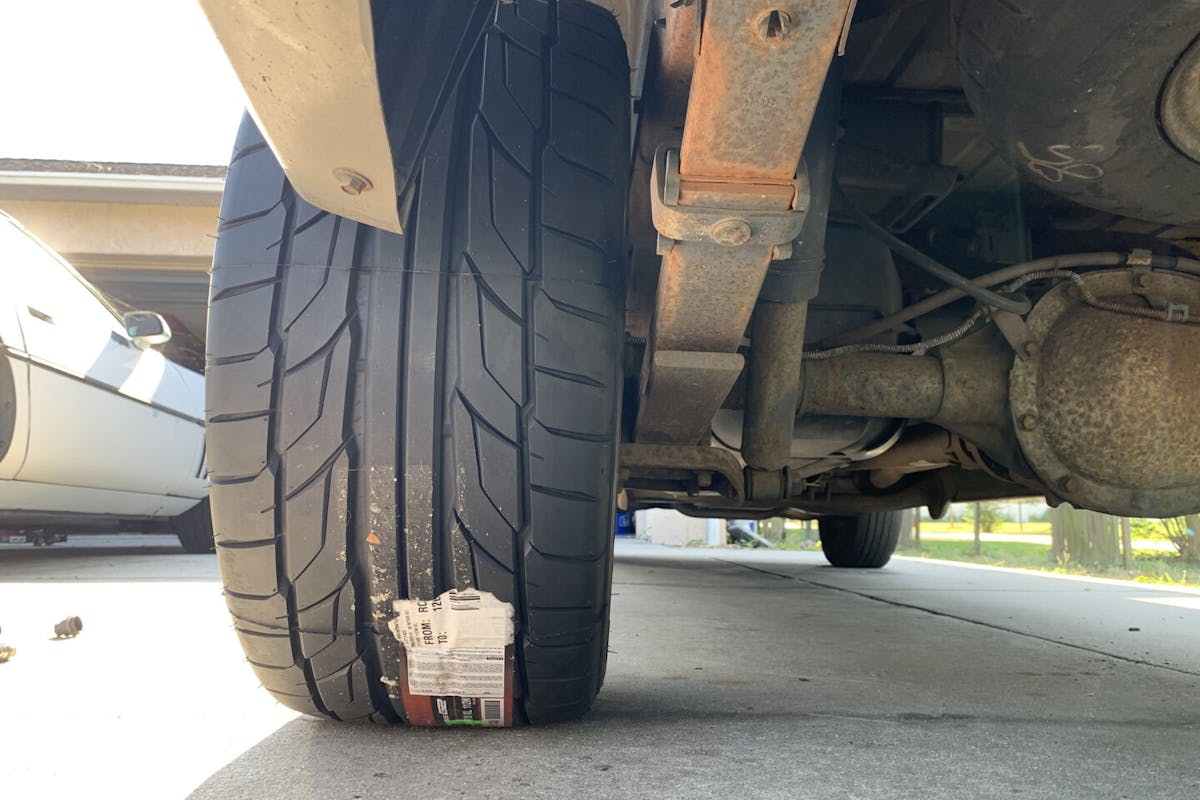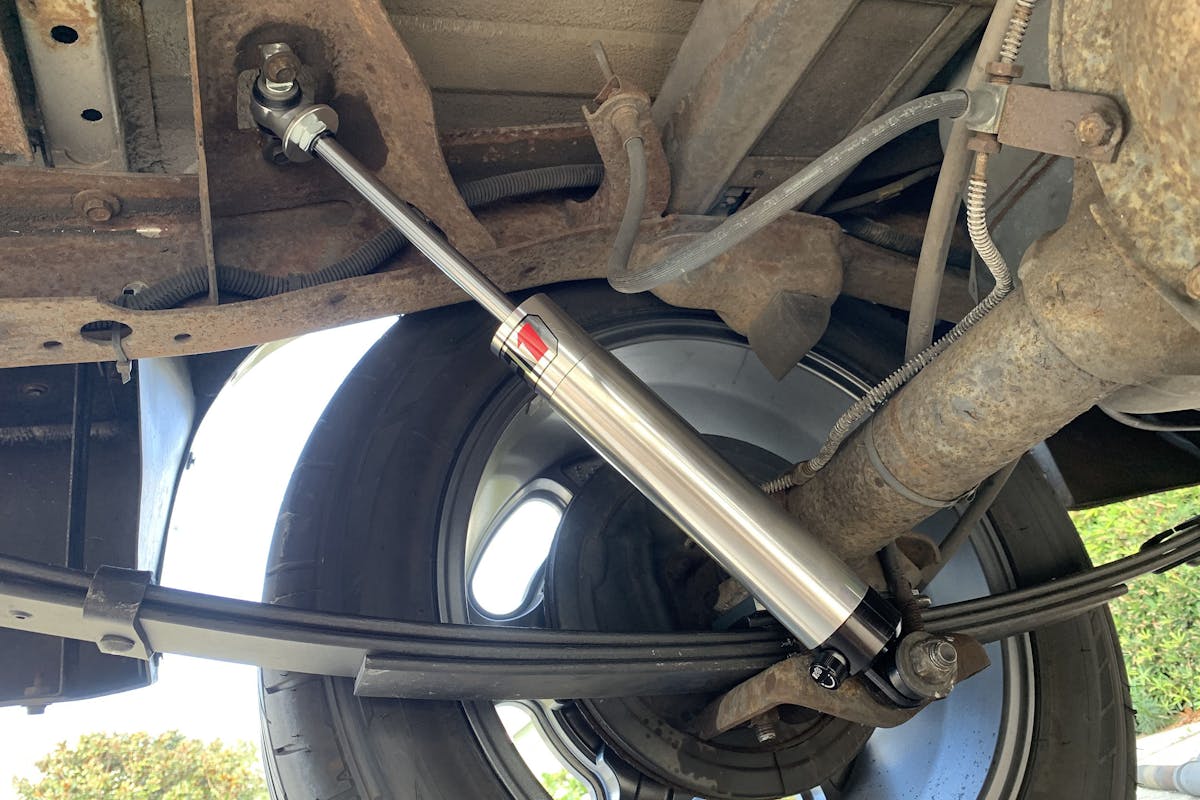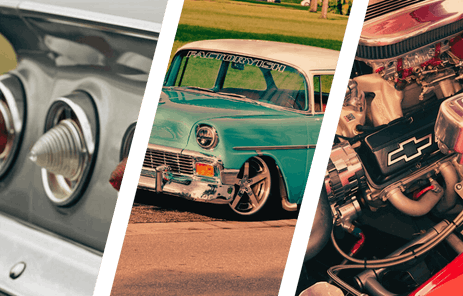When it comes to lowering any vehicle, the “perfect” stance is somewhat subjective. We recently dropped the front of our 1999 Chevy S10 with a set of QA1 coilovers and Speedway Motors dropped spindles. That made the backside of our little truck higher than we liked, so now we’re leveling our S10 with new leaf springs and shocks, again from Speedway Motors and QA1.

Lowering the rear of the truck is not as complicated as doing the same for the front suspension. The rear is held in place by a pair of leaf springs and, so long as rust hasn’t made your day longer with seized fasteners or stubborn bolts, this task should easily be completed in a day. Just as with the front suspension, we treated all of the fasteners with some penetrating fluid a couple of times before attempting to swap everything out.
Lowering Our S10 Properly
As with anything, there are several ways to go about dropping the back of an S10. Since the rearend sits atop the leaf springs, many enthusiasts will simply add blocks between the leaf spring and the mounts on the axle housing. This does lower the ride height, but you also need to get longer U-bolts to make up the difference.
This also decreases the clearance of the other suspension components to the ground. Taking four inches topside will decrease ground clearance below by four inches as well. That is usually enough for the leaf springs, or at least the U-bolts that secure them to the axle, to drag on the ground if you ever have a flat tire.

Instead of potentially dealing with this situation, we decided to drop our S10 with new springs and shocks designed for the lower stance. That way we’re not bottoming out our brand-new shocks if we hit a bump, or the bottom of the suspension if we have a flat tire.
Before Lowering Your S10
If you plan on having everything done in a weekend so you can drive your S10 to work Monday morning, you’ll need to plan so you have everything before you start lowering your S10. Speedway Motors offers several kits for lowering the front and rear of an S10 at various heights. We went with the lowering kit (PN 9172150), which includes drop spindles for the front and three-inch drop rear leaf springs. Note, if the shackles are rusty, as this would also be a good time to have new ones on hand for replacement. We also needed a shorter set of shocks for the rear of our S10. We like the adjustability of the QA1 coilovers up front and went with a set of QA1 single-adjustable shocks for the rear. Check out the video below to find out how to properly measure and get the right shocks for your application.
httpv://youtu.be/iBfJGKmMAm4
Beyond the shocks and springs, you need to consider how the lower stance affects your truck’s driveline angles. Improper driveline angles are the main contributor to driveline vibrations and can wear out components very quickly. We recently did a story that perfectly illustrated the importance of having the proper driveline angles. Take a second and check it out.
Thankfully for us, some very talented people have done a lot of the heavy lifting so far as setting up the proper angles for your transmission and driveshaft. Our ’99 Dime is an extended cab, which means it has a two-piece driveshaft with a carrier bearing. This S10 driveshaft is different than a lot of other vehicles in that it points up as it goes to the rear of the truck. Whether using lowering blocks or leaf springs, dropping the backside increases this angle, which would surely introduce vibration and wear out universal joints prematurely.

The folks at JTR Stealth Conversions have already done the math to bring our S10’s driveline back into proper alignment and they offer a kit that has everything you need, including the four-degree angled shims for the rear axle and shims to raise the transmission tailshaft and driveshaft carrier bearing. With all the necessary components in hand, we were ready to start swapping out parts to lower or S10.
Out With The Old, In With The New
After supporting the truck’s frame with jack stands, we removed the nuts for the lower shock mounting studs. Then, we moved on to the U-bolts that hold the rear housing to the old leaf springs. The beauty of having the axles go over the leaf springs is that once we removed the U-bolts, the rearend still happily rested on those springs.

We continued by removing the nuts for the front and rear leaf spring bolts. Our truck has some rust, but not as much as it might had it been fully submerged in those Midwest or Northeastern winters. Almost every nut and its fastener loosened up nicely, thanks to our trusty impact.
Removing the OEM spring fasteners is where things get a little tricky. The front leaf spring bolts are installed at the factory with the nuts facing out. That means the bolt needs to slide toward the middle of the truck to be removed. That’s fine until you realize there is now a fuel tank in the way on the driver’s side that obviously wasn’t there when that bolt was installed.
There are several ways to get around this issue. Some folks drop the offending gas tank, others drive the bolt out a bit and then cut off the head of the bolt so the rest of the bolt will come out. You would then need to purchase a new bolt. That one bolt is so close to clearing the tank, we took a third route – we dimpled the tank a bit with a ball-peen hammer so the bolt would clear. When we reinstalled the bolt, we simply fed it through from the other side. We’re sure there’s a reason they didn’t do that from the factory, but we don’t know what it is.
We began the first leaf spring extraction by removing its rear bolt from the shackle. If the shackles are in good shape, there’s no reason to mess with the upper bolt. This allowed the spring, as well as the rear tire, to rest on the ground while we removed the front bolt and spring completely. We slid the new spring, with its shim, into place and installed the front bolt. Leaf springs are bulky, so getting a bolt through the front mount helped keep it from flopping around.
We put our jack under the leaf spring to lift both the spring and the rearend. Then we could easily work the rear portion of the spring into the rear shackle, which held everything in place. We did the same for the other side.
With the rearend snuggled atop those new leaf springs and angled shims, we secured everything with our reconditioned U-bolts and lower shock mount plates. From there, installing the new QA1 shocks was pretty straightforward, making sure the adjustment knobs were facing where we could get to them easily.
Correcting Our S10’s Driveline Angles
Lowering our S10 increased the angle of our driveshaft to the carrier bearing beyond what is acceptable. To counter this, JTR offers a one-inch shim to lift the carrier bearing to bring the driveshaft’s universal joints back into proper alignment.

Raising the carrier bearing also changes its relation to the transmission. JTR includes a 3/4-inch shim to place between the transmission tailshaft and its mount to realign all of the driveline angles to prevent unwanted vibration or wear. This is also a good time to replace that worn tailshaft mount if needed.
Driving Our Lowered S10
While lowering our S10 was mostly for appearance, there are some important realities to consider. The back of our S10 dropped 3-1/2 inches and still drives around fine. If we were to drop it any further, we would likely need to trim or remove the bump stops on the frame to give the suspension room to compress. As it is, we’ve put quite a few miles on our S10 and have not bottomed-out our suspension. That might change if we used our S10 for heavy-hauling.

Lowering a vehicle is a great way to center the tires into the wheel openings, but you also have to make sure that you still have enough clearance so you’re not gouging tires. We did a lot of measuring and research before ordering wheels, tires, and springs and were pretty confident that everything would fit. We’re happy to report that everything fits as anticipated, and the truck looks great, in our humble opinion. Now, we get to enjoy our lowered S10 and we’ve already witnessed a few snapped necks as we’ve driven through town.
You might also like
Buy It or Build It? These Aftermarket C10 Chassis Make the Case
An aftermarket C10 chassis is the best foundation for your next build. Here are the reasons why and some options for your next build.













